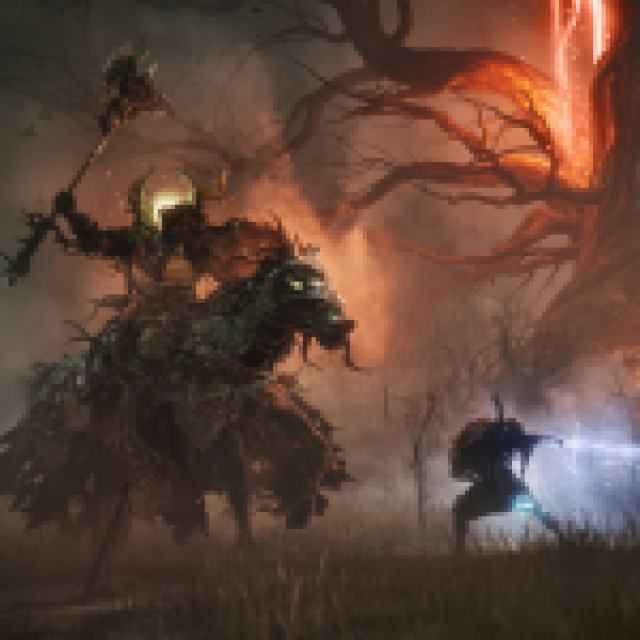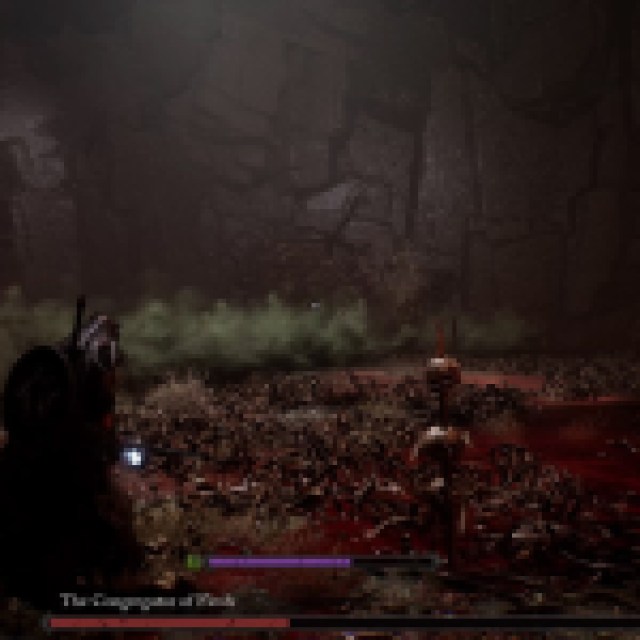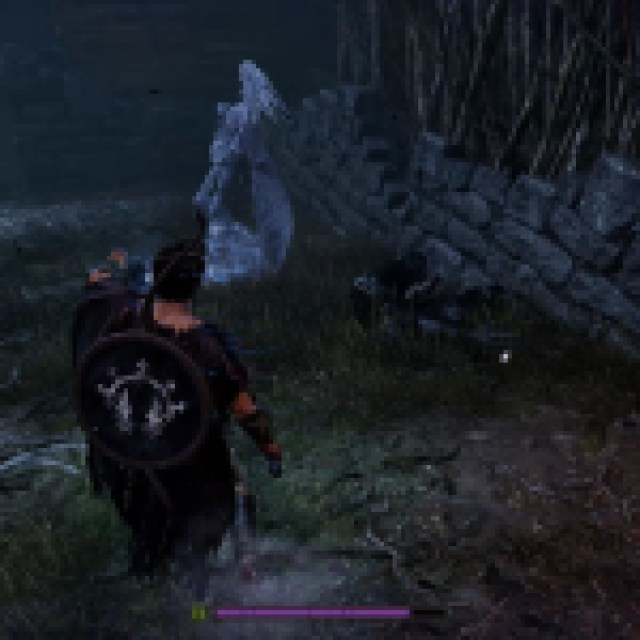The original Lords of the Fallen had a modest release back in 2014 with average reviews, despite having some passionate fans here and there. That excitement was enough for a sequel to be pitched in Lords of the Fallen 2. Unfortunately, that game never came to be as it was initially idealized and was later rebranded as The Lords of the Fallen, but ultimately received the exact same name as its predecessor. And it sounds confusing because it is.
But after setting that identity crisis aside, the title finally went to production, trying to differentiate itself amidst the genre, aiming to become a new promising entry for Soulslike titles. However, not all promises can be fulfilled in the real world, especially during one of the best years for the gaming industry regarding releases. Sometimes, sticking to the roots is more than enough.
The Underworld is Just the Beginning (Of Your Suffering)
Lords of the Fallen has quite a simplistic plot, and it honestly doesn’t need much more. You take on the role of the newest bearer of the Umbral Lamp, an enigmatic item that allows you to freely traverse between the realm of the living (the Axiom) and the realm of the dead (the Umbral). It also helps you accomplish other magnific feats, such as stripping the soul out of an individual or reliving memories from others.
Your goal is to cleanse this middle-aged world from the impending threat of Adyr, the same demon lord who acted as the invisible evil force in the original LotF. Religious motifs are everywhere, as you might’ve noticed from the poster boy being literally a Crusader.
But you also got the ever-growing forces of the Umbral and the Putrid Mother, whose hunger knows no limit and represents a danger to Mournstead. And the world is filled with those devoted to these sinister entities. You might even become an accomplice depending on which path you take.
Regardless of your morality, your path is filled with somber creatures from both realms that are out for your head. You’ll need to pick up any of the 11 classes available (4 of them being unlockable) to succeed in your task.


The combat seems quite attractive at first sight. Physical or magical, we have all kinds of builds here. Ranged options are not scarce either, and you can make different combos by merely changing the way you hold your weapon. And this is facilitated even further with the help of our beloved cursed lamp from the dead.
The Umbral Lamp lets you see the world through its dark lenses, revealing to humans what they should never see. The Umbral realm is a dark, twisted alternative reality co-existing with ours. Think Stranger Things’ Upside Down but edgier. Lost souls filled with regrets will attack you from the moment you enter here.
But a twist in Lords of the Fallen is that dying once doesn’t necessarily mean a one-way trip to the last checkpoint. If you die while you’re still in the realm of the living, you’re thrown into the Umbral instead.
You can clean up your enemies with this second shot at life and return to the realm of the living, but you’re stripped of your hard-earned experience (Vigor) if you die again in Umbral, forcing you to come back and grab it all again. You also need to kill whoever killed you to recover your Vigor, unless it was an Umbral enemy that doesn’t have a fixed spawn or a boss.
The Umbral realm hides a lot of secrets and side quests in its depths, and you’re forced to tap into it for progression at many points. The thin line between the living and the dead is constantly crossed as you face horrors from both sides, and your only option is to overpower them.
The thin line between the living and the dead is constantly crossed as you face horrors from both sides, and your only option is to overpower them.
Another original thing is that there are only a handful of checkpoints scattered around the map. You have to make your own safe havens with a special seed in specific places around the game. During NG+, only the main hub Checkpoint is available. This gives the player a certain freedom while also being restrictive in a certain way.
When you get your hands on a powerful weapon and have some good enchantments to use on it, the power fantasy gets real, and you might start feeling unstoppable. And this would probably feel great if it wasn’t for all of the other blatant issues in this title.
No Light at the End of the Road
Notice how I haven’t directly praised any of these features, and that’s because while they show a lot of promise, they ultimately fail to deliver a pleasing experience. The first issue here is performance. My PC struggled to maintain 60 FPS even though my settings are way above the recommended, and consoles are also having it rough, from what it seems. Even with optimized settings, you can barely get more 40 FPS during certain boss fights.
While performance shouldn’t be a determining factor as it can improve over time, it isn’t the only thing fundamentally wrong here. Combat starts slow and eventually picks up as you discover more ways to tweak your build, but encounters will feel soulless regardless of how many hours you’ve put into this game.
The game is balanced around the fact that you can essentially die twice, but it adds difficulty in a non-challenging, non-engaging way that I can only describe as “basically unfair.” Creatures will randomly sneak to your back and overpower you with sheer numbers, especially if you’re in Umbral. Enemy patterns or damage values aren’t the biggest issues, but they’re simply thrown at you without much thought. Even if you feel like you have many tools at your disposal, they just don’t seem to be effective.
Encouraging players to enter the Umbral to find treasures and get more experience from enemies is an excellent high-risk, high-reward feature, but also gets old quickly. You usually just want to get out of there as fast as you can, but you’re literally trapped in hell until you can find an exit. Otherwise, you’ll be waiting for your eventual demise. The Umbral is a fantastic concept, but it ultimately adds unnecessary layers of frustration even to the most persistent of players.
But performance isn’t the only technical problem here. From the huge loading screens (especially after dying) and some suspicious hitboxes, other issues will constantly torment you as you try to make your way through here. Some of those include randomly losing your target and missing a crucial hit or getting stuck between NPCs and the environment more than once without even trying.
There was a time when I was getting tired of an early boss, so I beckoned help from an NPC. After my phantom ally died, the boss just stood there in place. He eventually started hitting the air where the NPC was supposed to be, and he never snapped out of that. I tried baiting him into focusing on me again, but he completely ignored my attempts. I was struggling with him, but I didn’t want things to go as anti-climatic as that.


The usual loneliness feeling from the genre is constant, but that old satisfaction from discovering hidden lore or overcoming powerful enemies never knocked on my door. And there’s a LOT of bosses in this game. Many of them are exclusive to certain endings, but they also get repetitive after some time.
Most won’t add much to the overall gameplay or the small story sections. Characters like the Gerlinde and Sparky duo make for some exciting moments, but it’s nothing to write home about. But the game never demonstrated that its story should be a high point, so that’s easily forgivable. I was never expecting to find touching lore like Sif and Artorias here.
Some bosses were just too annoying or artificially extended their encountr duration through invincible phases that added nothing to the fight. Soulslike bosses work when they’re fair challenges of both perseverance and skill, but most encounters here often lack either or both of those.
Soulslike bosses work when they’re fair challenges of both perseverance and skill, but most of the encounters here often lack either or both of those.
And that’s a shame, considering how great the art direction is here. The scenario views are mostly solid, but some musical tunes are just mind-blowing. They give us a feeling that certain fights would be amazing if the game worked a bit better. The more I walked through these damned lands, the more I felt like this title wasn’t complete just yet.
The Good, the Bad and the Fallen
Lords of the Fallen feels like a hidden gem that still needs polishing before turning into a bright diamond. The overall visuals are amazing, and some bosses are more than just your usual grotesque, angry dark fantasy creature that looks like they stepped on a Lego. The build system has some solid depth to it with its many classes, but that’s where the praises must end.
Combat is an inconsistent juggling between fluid movements and the most frustrating experience you can have, thanks to a problematic level design. While parrying is satisfying and dodging at the right time gives you an extra edge on your opponents, you can’t do much of that when the environment’s fighting against you with all of its might.
I get how some people can appreciate the extra challenge, but I can’t accept throwing more damage sponges at the player as a good way of tuning difficulty. Umbral becomes more mandatory as you progress instead of being an alternative path or a punishment, so it has to be all of those things at once. And unfortunately, it fails to be any of them decently.


The so-memorable boss fights drag out for longer than expected, and the loop of returning to the arena after retrieving your lost currency makes you question if it’s even worth trying. And there’s no big reward waiting for you at the end unless the combat’s really clicking with you. In that case, NG+ and the alternative endings are probably worth a chase.
I think this game can be really fun, but it’s usually the opposite of that most of the time. And I would completely understand if it eventually amassed a loyal following that loves it to death despite its flaws just like Dark Souls 2 did.
But I wouldn’t be honest with myself if I said that everyone should try it. Unless they’re really curious about the good bits. The game might be worthwhile if you love the genre and have some spare time/money. Otherwise, you’re better off playing something else.
This same-named sequel improved greatly from the original title, but it’s still not enough to stand out from the other amazing titles we’ve seen this year. The previously mentioned studio changes could be at fault, but I’m not here to speculate. The overall blueprint still looks great, so maybe we could see something interesting with a proper Lords of the Fallen 2 in the future.
You might want to give it a shot after it receives some patches and gets a more stable release since there’s a lot of untapped potential here. But for now, the Umbral realm is still too uncanny to explore.

- Umbral is a good concept.
- Movement feels good when it's not bugged.
- Beautiful scenarios and music.
- Performance is abysmal on PC.
- Level and Boss design are generally weak with rare exceptions.
- Many original ideas are more frustrating than anything.





Published: Oct 20, 2023 10:20 am